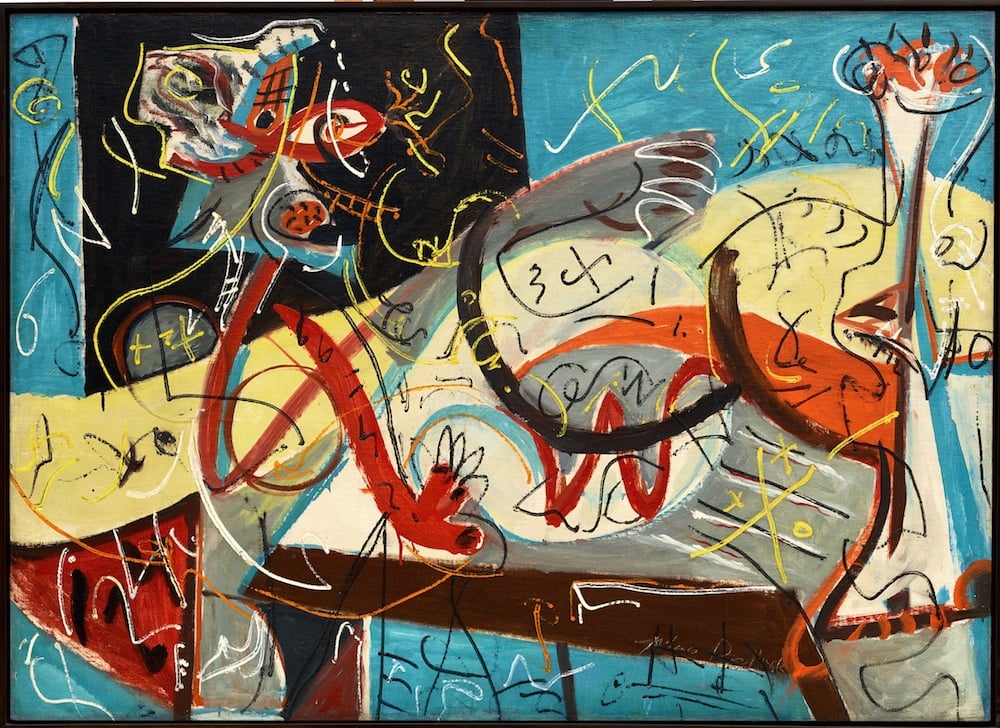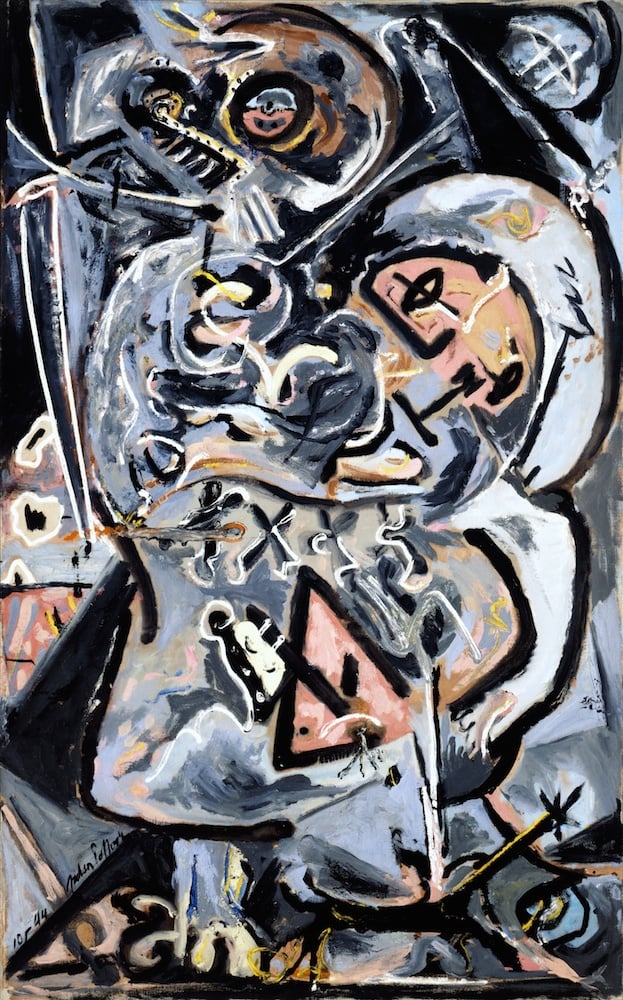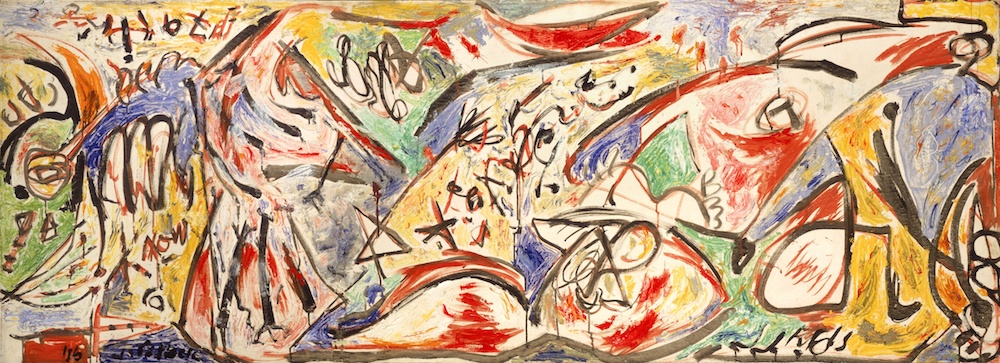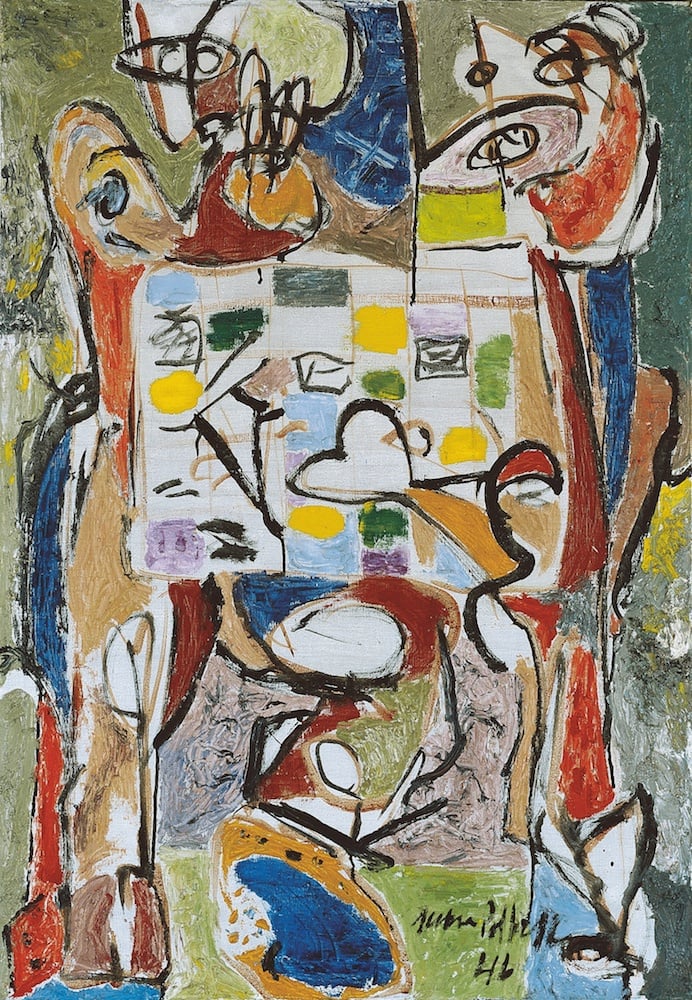On View
New Jackson Pollock Exhibition at Kunstmuseum Basel Explores His Figurative Side
The exhibition seeks to cast the artist in a new light.

The exhibition seeks to cast the artist in a new light.

Amah-Rose Abrams

“The Figurative Pollock” which opened at the Kunstmuseum in Basel this weekend explores a lesser-known aspect of the legendary Abstract Expressionist’s oeuvre: his figurative paintings.
“When you’re painting out of your unconscious, figures are bound to emerge,” Pollock once famously said to Seldon Rodman. Yet in Pollock’s most famous work—his drip paintings—any figurative aspects are highly obscured.

Jackson Pollock Totem Lesson 1. Photo courtesy of Kunstmuseum Basel
Pollock’s figurative period came after his drip paintings, in fact, which the artist created between 1947-50, and this large exhibition seeks to explore this side of his work extensively. Although some drip paintings are featured in this exhibition the aim of “The Figurative Pollock” is to cast his body of work in a different light.

Jackson Pollock The Water Bull (1946). Photo courtesy Kunstmuseum Basel
The show examines Pollock’s earlier work from his time studying under Regionalist Thomas Hart Benton to learning about the likes of El Greco, Rembrandt, Michelangelo, and artists from the Italian Baroque period. Through linking his studies and the development of his work to his later discovery of European Modern artists such as Picasso, the show seeks to give us a new take on Pollock.
Also explored in “The Figurative Pollock” is the influence the traditional artwork of North American indigenous peoples, as well as Mexican muralists such as Diego Rivera and José Celemente Orozco have had on Pollock’s work.

Jackson Pollock The Tea Cup (1946). Photo courtesy Kunstmuseum Basel
The exhibition, that includes works from the 30s, 40s, and 50s, explores Pollock’s figurative work up until his death in 1956, aged just 44 and not only adds another perspective to his oeuvre but also ask questions about how his work might have progressed had he lived longer.
“The Figurative Pollock” will be on view at Kunstmuseum Basel until January 22, 2017